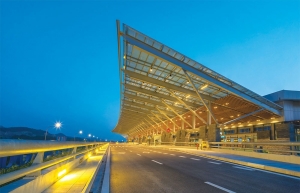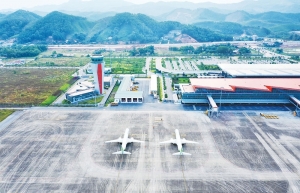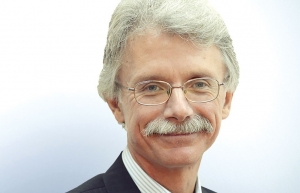Airport development and operation, Singapore style
Cities and provinces in Vietnam are looking to develop more airports to support their socioeconomic aims. How important do you think this can be?
 |
| Andrew Tan, director and head of Airport Operations at Changi Airports International |
A study by the International Air Transport Association and Oxford Economics has found that air transport supports 30.2 million jobs and $684 billion in GDP in Asia-Pacific. For each person directly employed in the aviation sector and in tourism made possible by aviation, another 6.4 jobs were supported elsewhere worldwide.
Similarly, for every $1 of gross value added directly created by the air transport sector, $3.80 of economic activity was supported elsewhere.
The pandemic has shown that airports are important in supporting the growth of the economy and facilitating the transport of vital goods and supplies, such as vaccines and food. Such air links have repeatedly been shown to be an important lifeline to cities and countries.
What lessons could Vietnam learn from Singapore in successful development of airports?
Realising the importance of the aviation sector to the economic development of Singapore, Changi Airport has always planned for its handling capacity to be ahead of demand. Airports are complex facilities, interfacing with various stakeholders and systems. Careful planning has helped Changi Airport stay ahead of the curve.
Detailed advance planning is also critical to ensure that airports undergoing major expansion or new development can be constructed in the most cost-effective and time-effective manner, while maximising its future economic potential as a major air hub for its surrounding catchment and hinterland. We have seen some airports in other parts of the world that suffered from operational inefficiencies after their construction was rushed into completion, without due considerations given to the implications on future operations and potential difficulties of maintenance.
Eventually, some of these airports had to incur even more capital and operational expenditure to rectify the deficiencies, which could have been avoided in the first place if advance planning was carried out before and during the construction stage.
Similarly, stakeholder management is crucial. Airport operators have to work hand-in-hand with government agencies, service providers, airlines and other airport partners. This begins from the planning stage, where user requirements and future needs are taken into consideration. Such input is important for the development of the airport’s concept of operations.
Such collaboration continues as the detailed design of the airport is taking place, until the end-user trials. In this final stage, all stakeholders participate in trials to ready the airport for opening, simulating their operations and processes, before the final migration to the new airports.
Are there any airport projects in Vietnam that Singaporean companies may be interested in?
With numerous projects reported in the pipeline, such as Long Thanh International Airport, Tan Son Nhat’s Terminal 3, and Hanoi’s proposed airport in Thuong Tin district, we expect many opportunities for Singaporean companies in airport development.
Changi Airports International consults, manages, and invests in the global aviation market. We see airports as a vital part of a country’s infrastructure, intricately linked to economic growth and development. With experience in over 60 airports for more than 20 years, we see an opportunity to provide Changi’s expertise as a strategic partner and an experienced airport manager.
From master-planning to passenger traffic development, as well as operations and commercial development, we can design bespoke and integrated solutions which could help airports in Vietnam to unlock their full potential.
 | New airport developments set to take off soon The Vietnamese government has rolled out a plan to develop several new airports, with billions of dollars expected to be poured into local facilities, contributing to the shaping of new economic zones across the country. |
 | Finding suitable models for small airports in Vietnam Michel Werson, chief economist and lead of Financial Advisory at NACO – a subsidiary of Royal HaskoningDHV – delves into the ins and outs of airport development. |
 | Utilising national advantages with crucial infrastructure Small airports and dual-use airports are expected to be valuable infrastructure fulcrums for many remote localities to attract investment and exploit the advantages of tourism, if selected and added to the plan and early investment implementation. |
 | Making the right choices for private airport expansion Vietnam’s airport development plan for 2030 is a hot issue, attracting much interest among private investors and cities and provinces. Tony Foster, managing partner at Freshfields Bruckhaus Deringer LLP, delves into future opportunities, possible risks, and lessons from other countries. |
What the stars mean:
★ Poor ★ ★ Promising ★★★ Good ★★★★ Very good ★★★★★ Exceptional
Related Contents
Latest News
More News
- Partnerships drive sustainable finance (January 07, 2026 | 09:23)
- FDI inflows reach $38.42 billion in 2025 (January 06, 2026 | 17:55)
- $2.1 billion Nghi Son LNG-fired thermal power plant waits for investor (January 06, 2026 | 17:51)
- GE Vernova powers up Vietnam with first 9HA gas power plant in the country (January 06, 2026 | 16:54)
- Solid finish for manufacturing after volatile year (January 06, 2026 | 08:50)
- Meiko strengthens Vietnam operations with new PCB plants (January 06, 2026 | 08:49)
- Ho Chi Minh City backs $2 billion AI data centre with dedicated task force (January 06, 2026 | 08:43)
- PM sets January deadline for high-speed rail consultant (January 06, 2026 | 08:40)
- New decree spurs on PPP implementation (December 31, 2025 | 19:01)
- Global alliance develops $1 billion AI data centre network in Vietnam (December 30, 2025 | 10:08)

 Tag:
Tag:



















 Mobile Version
Mobile Version